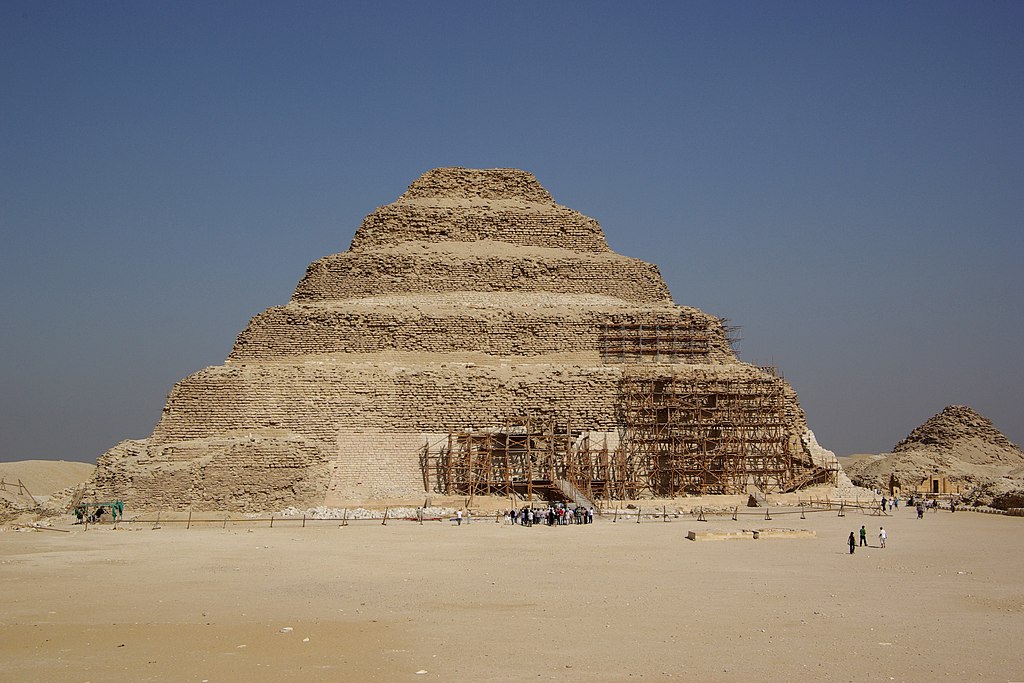Afar men and a bust of a high official from the 5th Dynasty (Old Kingdom) when they were still building pyramids about 4300 years ago…Located in the Ny Carlsberg Glyptotek Museum in Copenhagen…The Afar are a semi-nomadic people primarily inhabiting the Afar Triangle, a region in the Horn of Africa, including parts of Ethiopia, Eritrea, and Djibouti…
The Old Kingdom of Ancient Egypt, spanning from c. 2675-2130 BC, marked a significant era in Egyptian history characterized by monumental achievements in architecture, art, and centralized governance. It encompassed the reigns of pharaohs from the Third to the Eighth Dynasties and is famously known as the period during which the iconic Pyramids of Egypt were constructed.
These colossal structures, including the Great Pyramid of Giza, served as tombs for the pharaohs, reflecting the society’s profound religious beliefs in the afterlife and the divine authority of the ruler. The Old Kingdom saw the establishment of a strong bureaucratic administration, the development of sophisticated hieroglyphic writing, and the flourishing of artistic and architectural innovation.
 The Step Pyramid of Djoser, Saqqara. (c) Berthold Werner
The Step Pyramid of Djoser, Saqqara. (c) Berthold Werner
Click Here for the Timeline of Ancient Egypt
King Djoser, the pioneering ruler of the Third Dynasty (c. 2675-2625 BC), made significant contributions to ancient Egyptian architecture and royal burial practices. He relocated the royal capital to Memphis and established his court there, while also continuing the tradition of royal burials at Saqqara, the necropolis of Memphis. Djoser’s most renowned legacy is the construction of the Step Pyramid at Saqqara, a monumental achievement attributed to his brilliant chancellor Imhotep.
Building upon Djoser’s ambitious funerary projects, the kings of the Fourth Dynasty (c. 2625-2500 BC) further elevated the scale and grandeur of royal tombs. King Sneferu, the inaugural monarch of the Fourth Dynasty, initiated this trend by commissioning the Bent Pyramid and later the Red Pyramid at Dahshur, marking significant advancements in pyramid construction techniques. The legacy of monumental pyramid building reached its zenith with Sneferu’s successors, including Khufu, Khafre, and Menkaure, who oversaw the construction of the iconic Pyramids of Giza.

The Pyramids of Khufu, Khafre and Menkaure, Giza. (c) Ricardo Liberato
The era spanning from the Fourth to the Eighth Dynasties of Egypt remains shrouded in mystery, with limited historical records available to illuminate this period. Our understanding of this time comes primarily from the remnants of monuments and their inscriptions. The prolonged reign of Pepi II marked the onset of internal unrest within Egypt, potentially leading to succession crises and the eruption of civil conflicts.
Additionally, the occurrence of the Drought of the 22nd c. BC, characterized by a significant decrease in rainfall and the consequent disruption of the Nile’s annual flooding, likely exacerbated the societal challenges faced by Egypt during this period, contributing to its decline. Following the zenith of the Old Kingdom, Egypt entered a phase of disunity and cultural stagnation known as the First Intermediate Period, marking a transitional period in its ancient history.